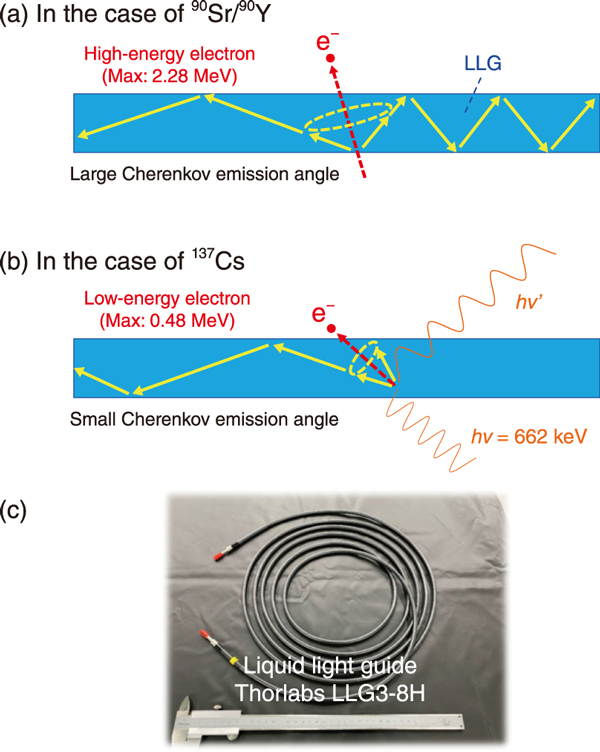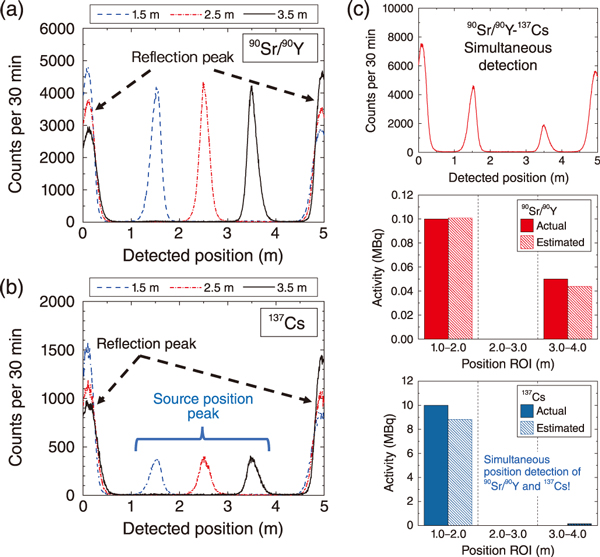
Fig.1 Energy dependence of the Cherenkov emission angle

Fig.2 Time-of-flight (TOF) analysis on the liquid light guide for 90Sr/90Y and 137Cs point source measurements
A position-sensitive radiation detector, which applies the time-of-flight (TOF) method to optical fibers, determines the incidence position of radiation from the difference in light arrival time at both ends of the optical fiber. This method has been studied as a means to measure the one-dimensional distribution of radioactive substances. After the TEPCO’s Fukushima Daiichi Nuclear Power Station (FDNPS) accident, this method has been applied for surveys such as the examination of the distribution of radioactive cesium (137Cs) at the bottom of lakes and marshes. Although this method can identify the incidence position of radiation on the optical fiber, it cannot distinguish the nuclides. In addition to 137Cs, beta-emitting nuclides 90Sr/90Y also exists inside and outside the FDNPS reactor building, and their detailed distribution is nearly unknown. Radiation protection of the eye lens has recently become an important issue, and thus understanding the distribution of 90Sr/90Y is expected to become important in the future.
In collaboration with Nagoya University, we developed a method to measure the positions of 137Cs and 90Sr/90Y simultaneously using a liquid light guide (LLG), an optical fiber with a liquid core. We performed the TOF analysis of Cherenkov light generated by charged particles passing through the LLG core. The directivity of Cherenkov radiation depends on the energy of the passing charged particle, leading to differences between 90Sr/90Y and 137Cs (Figs.1(a) and 1(b)). The results of measuring the point source positions of 137Cs and 90Sr/90Y using the LLG (Fig.1(c)) based on the TOF method are shown in Figs.2(a) and 2(b). While peaks corresponding to the source position can be confirmed for both, there were clear differences in the count ratio between the source position peak, an event corresponding to the Cherenkov light reaching both ends of the LLG, and the end-face reflection peak, where it reached only one side. This is because the difference in the Cherenkov emission angle affected the likelihood of the light reaching both ends of the LLG. By leveraging this difference, it is possible to distinguish between 90Sr/90Y and 137Cs. The simultaneous measurement results of the position distribution of 90Sr/90Y and 137Cs are shown in Fig.2(c). Based on the histograms shown in Figs.2(a) and 2(b), we estimate the combination of nuclide positions that best reproduces the histogram in Fig.2(c). By considering count information of the end-face reflection peak formed by the directivity of Cherenkov radiation as a parameter, we successfully reconstructed the positions of the 90Sr/90Y and 137Cs sources simultaneously. This method is expected to be applied for the selective measurements of 90Sr/90Y under high gamma-ray backgrounds, such as inside the FDNPS reactor building.
This work was partially supported by the JAEA Nuclear Energy Science & Technology and Human Resource Development Project Grant Number JPJA19B19206529, “Measurement Methods for the Radioactive Source Distribution Inside Reactor Buildings Using a One-Dimensional Optical Fiber Radiation Sensor.”
(Yuta Terasaka)